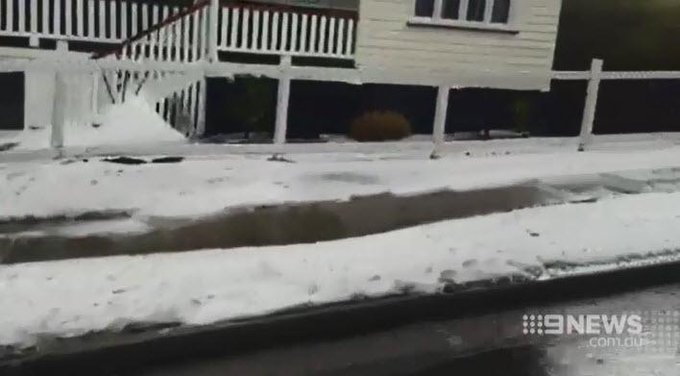Weather History
For Sunday,October 4,2015
For Sunday,October 4,2015
1777
- The Battle of Germantown was fought in a morning fog that grew more
dense with the smoke of battle, causing great confusion. Americans
firing at each other contributed to the loss of the battle. (David
Ludlum)
1869
- A great storm struck New England. The storm reportedly was predicted
twelve months in advance by a British officer named Saxby. Heavy rains
and high floods plagued all of New England, with strong winds and high
tides over New Hampshire and Maine. Canton CT was deluged with 12.35
inches of rain. (David Ludlum)
1969
- Denver, CO, received 9.6 inches of snow. October of that year proved
to be the coldest and snowiest of record for Denver, with a total
snowfall for the month of 31.2 inches. (Weather Channel)
1986
- Excessive flooding was reported along the Mississippi River and all
over the Midwest, from Ohio to the Milk River in Montana. In some places
it was the worst flooding of record. (Sandra and TI Richard Sanders -
1987)
1987
- A storm brought record snows to the northeastern U.S. Snowfall totals
ranged up to 21 inches at North Springfield VT. It was the earliest
snow of record for some locations. The storm claimed 17 lives in central
New York State, injured 332 persons, and in Vermont caused seventeen
million dollars damage. The six inch snow at Albany NY was their
earliest measurable snow in 117 years of records. (The National Weather
Summary) (Storm Data) (The Weather Channel)
1987
- Southern California continued to "shake and bake". An earthquake was
reported during the morning, the second in a matter of days, and during
the afternoon temperatures soared well above 100 degrees. Highs of 100
degrees at San Francisco, and 108 degrees at Los Angeles and Santa
Maria, were October records. San Luis Obispo was the hot spot in the
nation with an afternoon high of 111 degrees. (The National Weather
Summary).
1988
- Temperatures dipped below freezing in the north central U.S. Five
cities in North Dakota and Nebraska reported record low temperatures for
the date, including Bismarck ND with a reading of 17 degrees above
zero. Low pressure brought snow and sleet to parts of Upper Michigan.
(The National Weather Summary)
1989
- Unseasonably cold weather continued in the north central U.S., with
freezing temperatures reported across much of the area from eastern
North Dakota to Michigan and northwest Ohio. Thirteen cities reported
record low temperatures for the date, including Saint Cloud MN, which
was the cold spot in the nation with a morning low of 19 degrees. (The
National Weather Summary)














